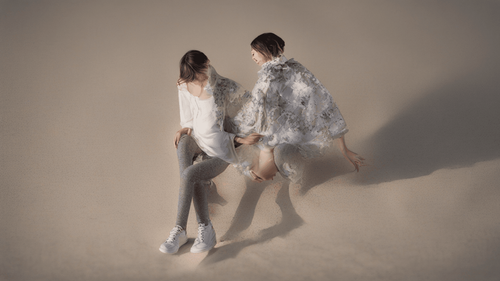
Introduction: The Power of AI in Visual Art
In the digital age, technology continues to push the boundaries of creative expression, and one of the most fascinating intersections is between artificial intelligence (AI) and visual art. AI make pictures, a groundbreaking application of AI, is revolutionizing the way we create, appreciate, and interact with art. From generating stunning artworks to assisting artists in their creative process, AI is reshaping the art landscape in unprecedented ways.
AI Make Pictures: Defining the Concept
AI make pictures, often referred to as generative art, involves the use of artificial intelligence algorithms to produce visual artworks. These algorithms are trained on vast datasets of existing artworks, learning patterns, styles, and techniques. As a result, AI can analyze and mimic various artistic styles, from classical paintings to modern digital designs.
How AI Creates Pictures: The Technical Magic
Neural Networks: Unraveling the Process
At the heart of AI make pictures are neural networks, a key technology in machine learning. These networks consist of interconnected nodes that process and transform data. In the context of generative art, neural networks analyze artistic features such as brushstrokes, color palettes, and shapes. By identifying patterns and relationships, AI can then generate entirely new images that resemble the works it was trained on.
Training and Fine-Tuning: From Data to Masterpiece
The process begins with feeding the AI algorithm an extensive collection of artworks spanning different styles and periods. Through a series of iterations, the algorithm refines its understanding of artistic elements. Fine-tuning is a crucial step, as it enables AI to capture the nuances that distinguish one artist's style from another. This amalgamation of techniques results in the AI's ability to create pictures that echo the essence of human artistry.
AI Make Pictures: Bridging Tradition and Innovation
Preserving Artistic Heritage: AI's Role
AI make pictures is not just about producing original pieces; it also has the potential to restore and preserve cultural heritage. Artifacts damaged by time or disaster can be digitally reconstructed using AI algorithms. This intersection of tradition and innovation ensures that valuable artworks are not lost to history and can continue to inspire generations to come.
Pushing Creative Boundaries: The Artist's Partner
AI is not here to replace artists but to collaborate with them. Creative professionals can leverage AI tools to experiment with new ideas, explore uncharted territories, and amplify their artistic vision. By analyzing an artist's previous works, AI can provide suggestions, helping creators break free from creative blocks and embark on new artistic journeys.
The Ethical Implications of AI in Art
Authorship and Originality: Navigating the Debate
As AI becomes more involved in artistic creation, questions arise about the attribution of artworks. Who owns the rights to a piece created by AI? Does the machine deserve credit, or is it the programmer who set the parameters? Addressing these ethical concerns is essential for establishing a fair framework that respects both AI's contribution and human creativity.
Human-AI Collaboration: Shaping the Future
The future of AI make pictures lies in collaborative efforts between humans and machines. The synergy between an artist's intuition and AI's computational prowess has the potential to birth art forms that are entirely novel and deeply resonant. By embracing this partnership, we can explore uncharted realms of visual expression that were previously unimaginable.
FAQs: Demystifying AI Make Pictures
How does AI create pictures?
AI uses neural networks to analyze artistic patterns and generate images based on its training data. It learns from existing artworks to produce new, unique visuals.
Can AI replace human artists?
No, AI is a creative tool that enhances human artistic endeavors. It assists artists, provides inspiration, and helps them push the boundaries of their creativity.
Is AI make pictures limited to digital art?
While AI is often associated with digital mediums, it can also influence traditional art forms. For instance, AI algorithms can analyze brushstrokes in classic paintings to mimic famous artists' styles.
What are the ethical concerns surrounding AI-generated art?
Ethical concerns include questions about authorship, ownership, and the originality of AI-generated artworks. Striking a balance between human and AI contributions is a crucial aspect of addressing these concerns.
Can AI-generated art have emotional depth?
Yes, AI-generated art can evoke emotions. While AI lacks human consciousness, it can replicate artistic styles and themes that resonate with audiences on an emotional level.
How can artists benefit from AI in their creative process?
AI tools can assist artists by suggesting new ideas, providing visual references, and helping to overcome creative blocks. This collaboration enables artists to explore new artistic territories.
Conclusion: A New Era of Artistic Innovation
AI make pictures heralds an exciting era where technology and creativity converge to redefine artistic expression. The fusion of AI's computational prowess and human imagination opens doors to uncharted realms of visual innovation. By embracing AI as a partner, artists can expand their horizons, create thought-provoking works, and contribute to a thriving global art landscape. As we journey further into the digital age, AI will undoubtedly continue to shape and enrich the world of art, making pictures that captivate, inspire, and challenge our perceptions.